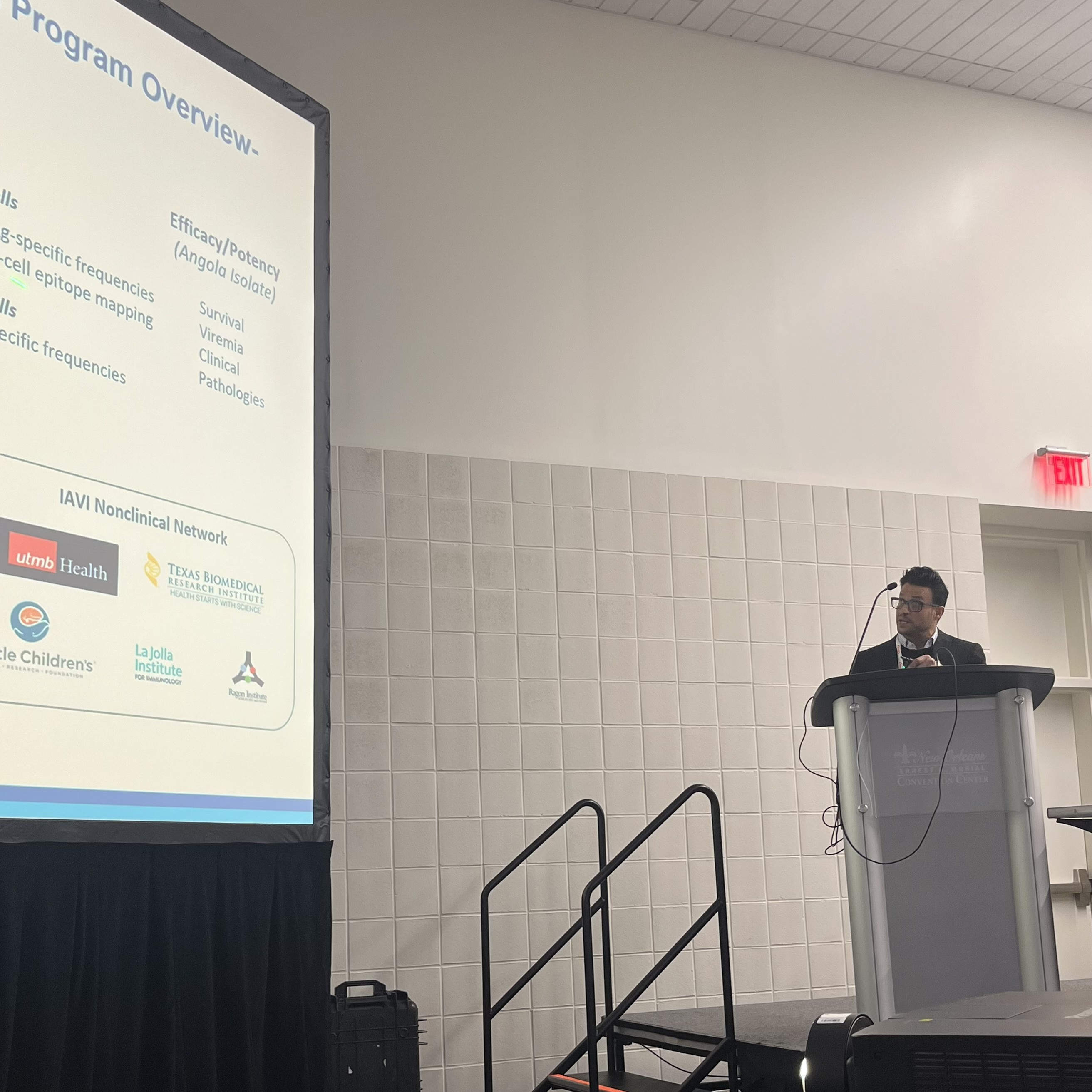ASTMH Annual Meeting 2025
blogExploring the protective potential of intranasal vaccines for the deadly Marburg virus
By: Rose Catlos, Communications Director, Iavi

Intranasal vaccines for influenza are a well-known, needle-free option for protecting people against seasonal flu, with researchers and scientists investigating new formulations for use against COVID-19 and respiratory syncytial virus (commonly known as RSV). Intranasal vaccination could also hold promise for treating potential outbreaks from bioweapons created with aerosolized pathogens, such as Marburg virus (MARV), the culprit of Rwanda’s current MARV outbreak.
While this and previous MARV outbreaks are largely attributed to wildlife spillover, a scenario in which a group deliberately deploys MARV for biologic warfare is a grave one. MARV, a filovirus endemic to sub-Saharan Africa, causes disease with a case fatality ratio of up to 88%. This makes it one of the deadliest known infectious diseases, yet no vaccine or specific treatment is available for MVD. And MARV is on the rise: Rwanda is the fifth new country in three years to experience an emergence of MARV disease, driven by climate change, land use changes, urbanization and other factors.
New research results presented Thursday at TropMed offer promise for the development of much-needed MARV vaccines. Christopher Cooper, PhD, director, viral vaccines, IAVI Vaccine Design and Development Laboratory (DDL), shared that animals vaccinated with IAVI’s intranasal MARV vaccine candidate were completely protected against MARV disease following an aerosolized MARV challenge. The study was supported by the Defense Threat Reduction Agency of the U.S. Department of Defense.
Cooper and his team at the IAVI DDL designed IAVI’s single-dose MARV vaccine candidate using a well-studied vaccine vector: vesicular stomatitis virus (VSV). VSV forms the backbone of a licensed vaccine, Ervebo®, Merck’s Ebola Zaire vaccine. IAVI and partners harness this proven platform technology to develop accessible vaccines for MARV, Lassa, and other priority emerging infectious diseases (EIDs). The DDL has more than 20 years of preclinical VSV vaccine development experience, first in HIV and now in EIDs.
Ongoing analyses further characterize the animals’ immune responses to IAVI’s MARV vaccine candidate. Based on the strength of this and other preclinical data, the IAVI team plans to initiate a Phase 1 clinical trial next year. Whether from wildlife spillover or from potential bioweapons, the hope is that this can prevent MARV and outbreaks.
###
Related Posts
By: Matthew Davis, Burness